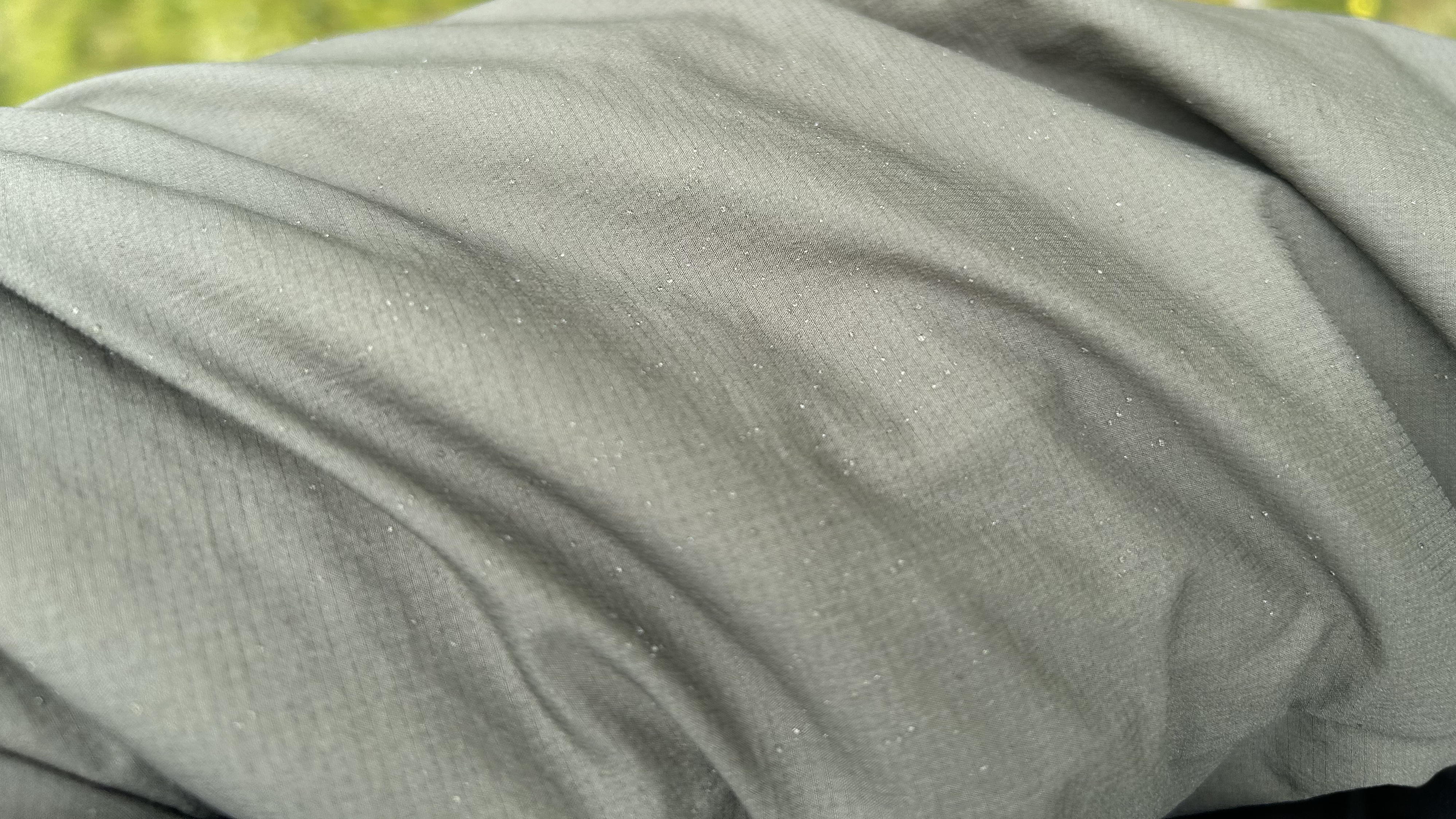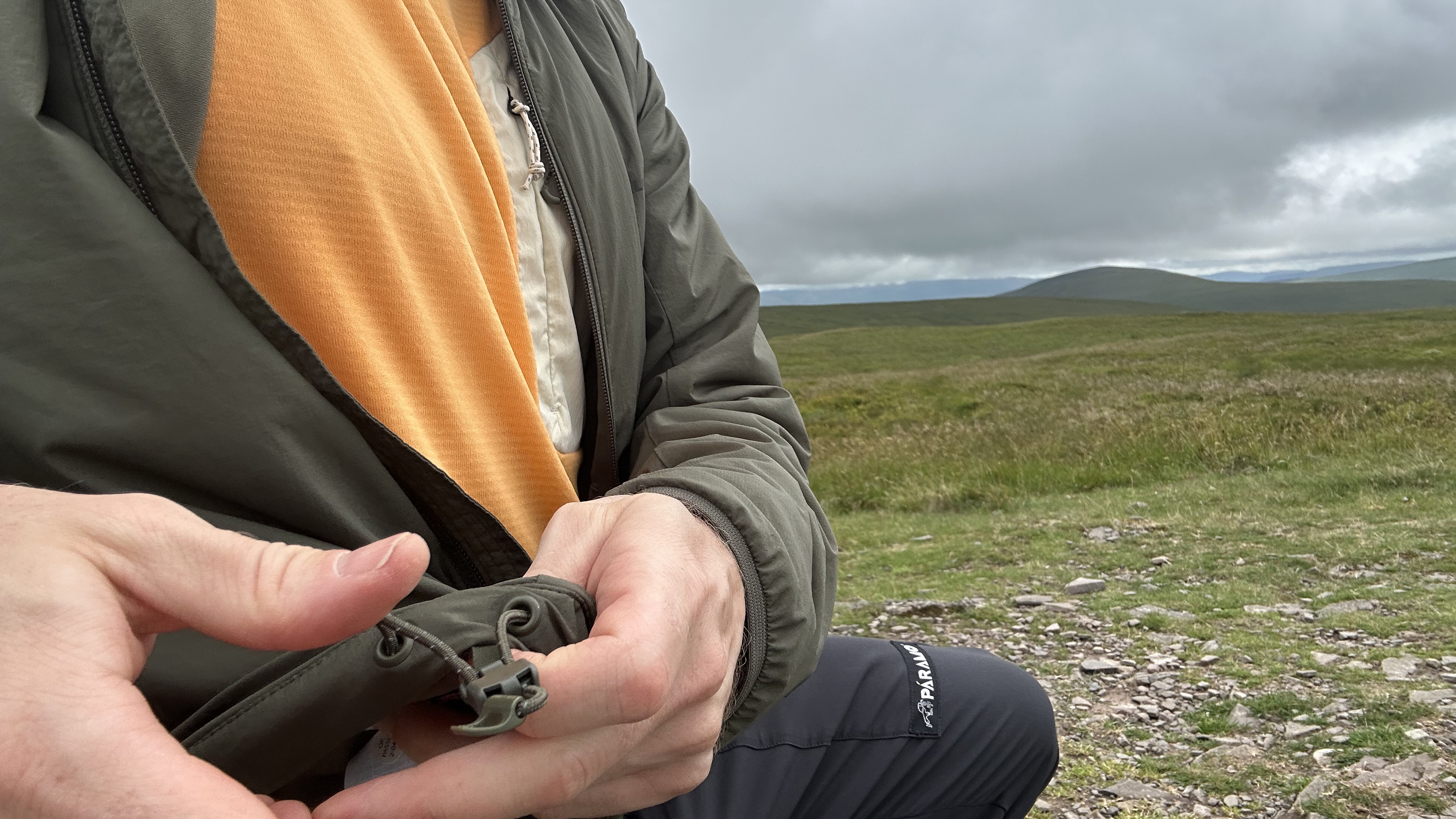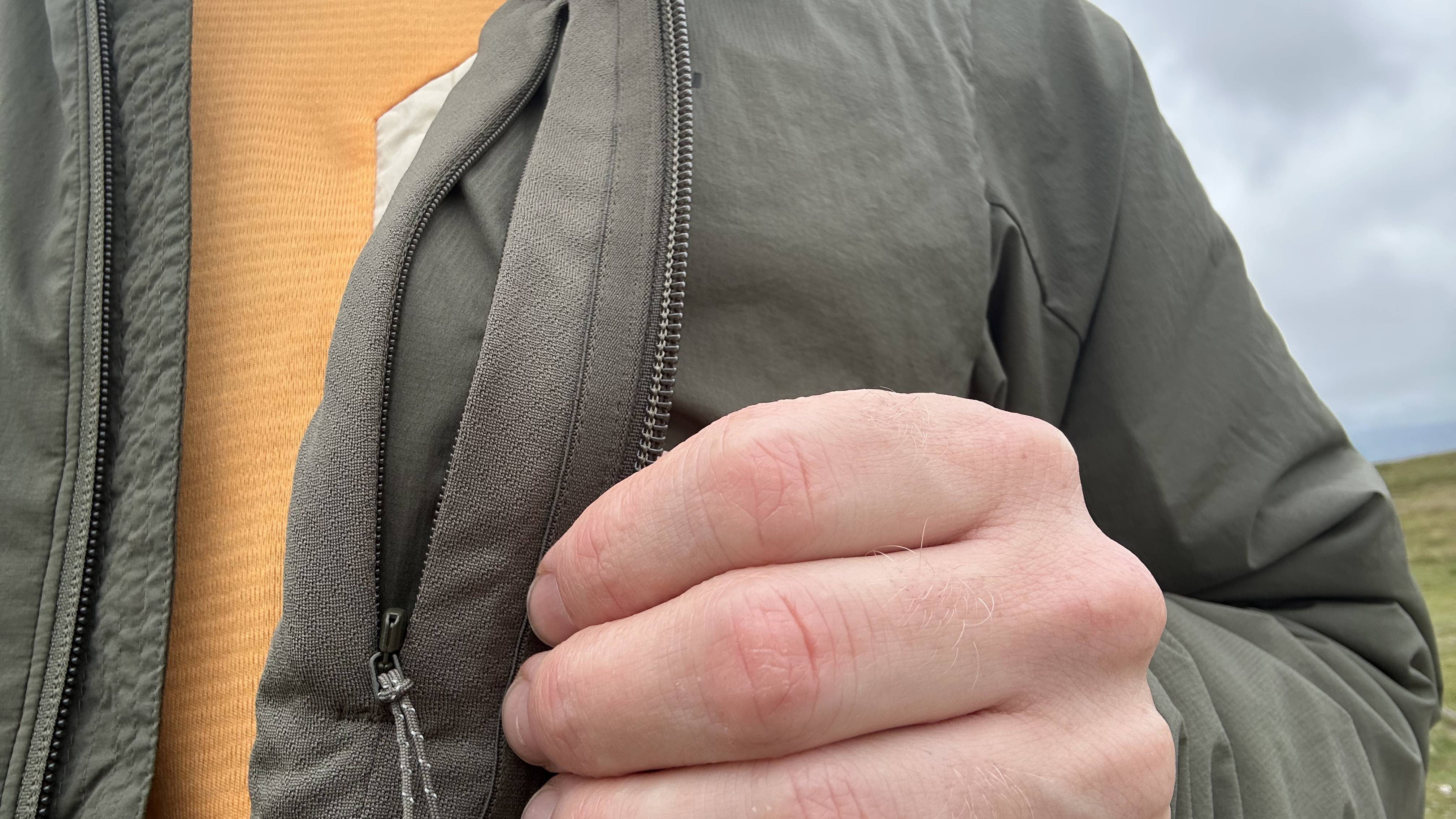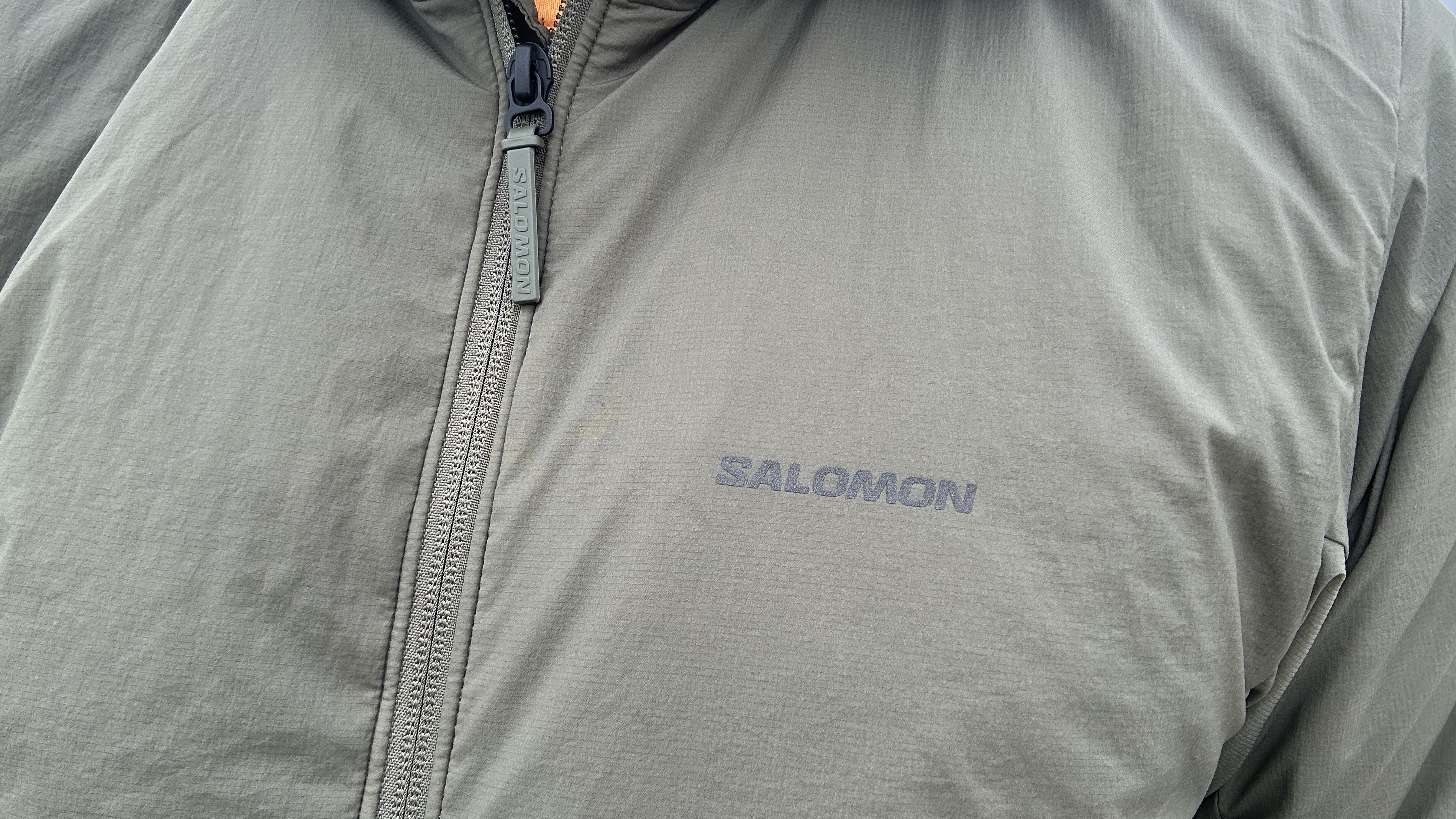
Founded in the years after the Second World War in Annecy, in the French Alps, Salomon is one of Europe’s most successful outdoor brands and has been at the forefront of trail running gear for decades. It also crafts reputable hiking, mountaineering, road running, gravel running (yes, it’s a thing), skiing and snowboarding equipment.
With the Mountain Flex jacket, Salomon has collaborated with the folk at Primaloft to create a lightweight insulated softshell jacket that provides warmth and breathability in equal measure. There are two version of the jacket: one’s hooded and the other isn’t. If you ever wondered how much you were paying for the pleasure of having a hood – the price difference is $20 (£20). Considering exchange rates, it seems American’s get a better deal on hoods.
I got hold of the hooded version and set out to test the jacket, which Salomon says is perfect for hiking, everyday use and winter adventures.
First impressions

List price: $240 (US) / £240 (UK)
Weight: 16oz / 455g
Water repellence: DWR
Materials: Two-way stretch 86% polyamide and 14% elastane shell, 100% polyester lining, 100% polyester padding, Polartec 200 series polyester fleece, Primaloft Gold CrossCore insulation
Colors: Blue Granite, Deep Black, Surf the Web (EU only), Grape Leaf (EU only), Shitake (US only)
Compatibility: Four-season adventures and everyday cold season wear
This is quite an understated jacket, featuring a single solid color and subtle Salomon lettering on the left breast and the brand’s S logo on the right wrist. I was testing the Grape Leaf colorway (EU only), an attractive green that had me blending in nicely with the local hills. Come nighttime, both the logo and Salomon lettering are highly reflective.
I like that there’s a smooth felt panel at the chin – a little dash of luxury – and an internal zippered pocket too. The hem and hood adjustment toggles are also really nicely designed, making both easy to tighten and loosen. It’s got a relaxed, regular fit, which is good when it comes to freedom of movement. It won’t be hitting the catwalk at Paris fashion week but I’m sure geography teachers will like it.
Star materials

The Mountain Flex gets its insulating qualities from its Primaloft fill. Interestingly, the jacket features what Salomon calls ClimateSync venting. The insulated fill is laser cut in the form of three-point stars, which you can see if you hold the jacket up to the light (see image above). Apparently these open up when you’re moving and close when you’re stationary. This has the effect of allowing air flow during dynamic activities while holding the warmth in when exertion ceases.
Freedom of movement is an oft-cited benefit of a softshell jacket when compared to a more rigid waterproof hardshell. This is often achieved with stretchy outer fabrics. You’ll often hear brands talk of two- or four-way stretch, which refers to the way a given material can stretch. In a nutshell, four-way means a fabric can stretch both horizontally and vertically, where two-way means it can only move horizontally or vertically.

In the case of the Mountain Flex, we’ve got ourselves a two-way stretch mixture of 86% polyamide and 14% elastane, providing that little bit of extra freedom when climbing, running or scrambling. It’s also a ripstop fabric, which means its resistant to tearing, to a point. Just promise me you won’t attack it with your crampon spikes.
The shell fabric is treated with durable water repellent (DWR), the same sort of coating usually applied to waterproof jackets. DWR acts like a forcefield, shielding the jacket from water ingress. However, unlike a waterproof jacket, the Mountain Flex doesn’t have an additional layer of Gore-Tex or similar as a definitive barrier against the wet. This means that once the DWR forcefield is beached, it’ll quickly get wet. The upshot of this is that the jacket is nice for fending off light rain or showers, especially as it’s so quick drying. However, for prolonged downpours and miserably wet days, a full waterproof is the outer shell you’ll need.
The standard features

As jacket features go, there’s nothing that surprises you here – just the tried and tested mainstays. Hand warmer pockets. Tick. Adjustable hood and hem. Tick. Interior zippered pocket. Tick. You get the picture.
Handwarmer pockets are a no brainer on insulated jackets and those that don’t include them irk me. Thank you for including them, Salomon. I’d much rather not have to wear hiking gloves for casual walks – handwarmer pockets allow me to leave them at home. There are no exterior chest pockets, which I suppose has the drawback that there’s nowhere to quickly stash things while wearing a harness, but this is a minor gripe.
The interior pocket is relatively small, too small to take a standard topographical map, which seems a shame. However, it’s better to have one than not and is a good place to keep your phone warm and safe in the sort of freezing conditions that will quickly drain its battery.

There’s a dash of luxury at the top of the zipper, where a lovely, soft panel of fabric lies in wait to caress your chin. This is designed to halt zipper irritation while walking and it works.
There’s adjustability at both the hem and the hood, though the cuffs are nothing more than elasticated. The drawcord tabs on both the hood and the two on the hem are very nicely engineered. They tighten with a simple pull, loosen with a press and a pull and are dead easy to manipulate, even when wearing gloves.
On the trails

I tested the Mountain Flex Insulated Jacket on everyday walks and during hiking days in the Bannau Brycheiniog (Brecon Beacons) National Park during the late spring and early summer.
It’s an easy jacket to get on with, as it’s so fuss free, which makes it a great choice for just grabbing on the way out the house. The handwarmer pockets mean you don’t have to worry about gloves and the interior pocket is ideal for items like keys.
It’s good in the high places too: a solid operator during the shoulder seasons, when its subtle warmth is enough to keep things toasty, while its breathable qualities mean that you don’t overheat. It stuffs down smaller than a down jacket, so doesn’t take up much room in a daypack either. The reflective branding is all good and well, but the lack of this on the back of the jacket means it’s not a good choice if you’re walking, running or cycling along the road at night.

Emerging victorious after a couple of downpours, I can attest to the fact that the Mountain Flex is relatively water-resistant, and I was also impressed at how quickly it was fully dry again afterwards. However, it’s by no means fully waterproof…
Here’s the thing. I live in the UK, which has a maritime climate – a wet one at that. Thanks for that, Mr Atlantic. Our winters feature wet cold. Our summers are often wet too, though extended dry spells aren’t unheard of. What I’m driving at is that, as good as the Mountain Flex Insulated Jacket is, I’d get far more use out of it in the mountains if I lived somewhere with a dry climate. When it comes to loading my backpack for a mountain adventure in the UK, I’m definitely packing a waterproof jacket, no matter what the forecast. Packing two jackets is an indulgence and a heavy one at that. I’d always opt for a better insulated emergency down jacket over a lightly insulated softshell.
That’s not to say the Mountain Flex isn’t fine for everyday wear during the colder months. I guess the issue here is that, to me at least, it's not particularly stylish, especially if you're shelling out over $200. So, if you’re after a quality jacket for hiking in dry climates, it’s a good shout. If you’re looking for a nice, lightly insulated jacket for everyday life during the colder months, its a functional option. If you’re looking to purchase a jacket for wet climbs in wet climes, save your cash for a waterproof.
Also consider
The Páramo Bentu Jacket is a bit of an indulgence. It’s good looking, super comfortable, totally windproof and has a few great practical features. It’s the perfect three-season jacket for hiking in most conditions. The reason it’s an indulgence is that it’s not a jacket we (or Páramo itself for that matter) would recommend for heavy, sustained rain, which means realistically you’d still need a waterproof jacket in your arsenal.
Pros
- More comfortable than a hard-shell jacket
- Ample zippered front pockets
- PFC-free finish
- Couples up neatly with the Bentu Fleece
Cons
- Not suitable for heavier rain
- Two-way zipper can be a bit fiddly
If you’re an active adventurer who enjoys strenuous, fast-paced pursuits in the mountains, this jacket is the one for you. It marries a vanishingly low weight with great performance and breathability in a minimal package that also looks great. It’s not as durable, robust or protective as many heavier jackets but, for its weight category, few other waterproofs can compete.
Read our full Norrøna Falketind Gore-Tex Paclite Jacket review
Pros
- Sleek looking
- Wonderfully breathable
- Exceedingly lightweight
- Barely there feel
- Packs down small
- Great length gives maximum coverage
- Perfect for active adventurers
- Over 50% of fabrics are recycled
Cons
- High price point for a Gore-Tex Paclite jacket
- Not as protective as some
Comparison table
Jacket |
Price |
Weight |
Style |
|---|---|---|---|
Salomon Mountain Flex Insulated Hooded Jacket |
$240 (US) / £240 (UK) |
16oz / 455g |
Insulated softshell |
Páramo Bentu Windproof Jacket |
$160 (US) / £120 (UK) |
15oz / 420g |
Windproof softshell |
Norrøna Falketind Gore-Tex Paclite Jacket |
$349 (US) / £349 (UK) |
9.1oz / 258g |
Lightweight waterproof |







